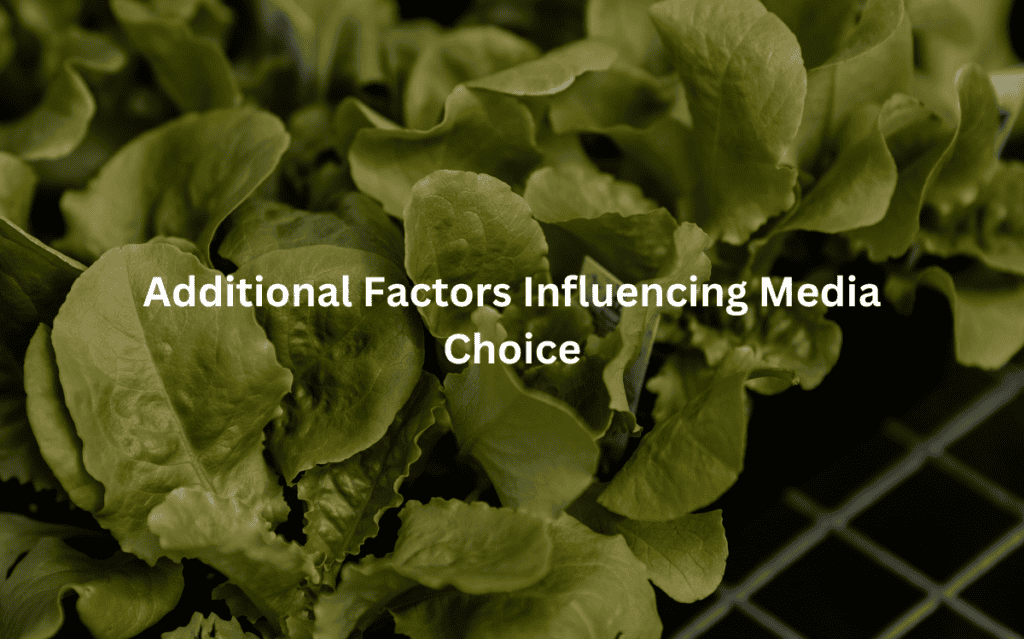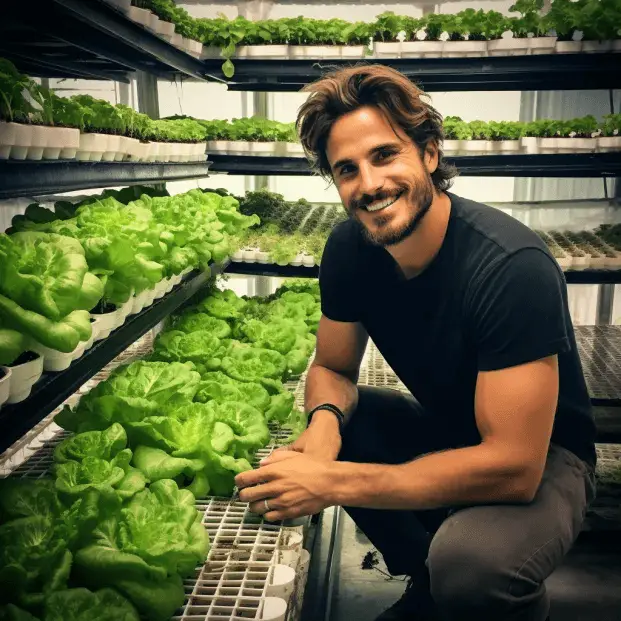Choosing the right growing media is key for success in plant growth, especially since climate conditions can vary so much (1). The grow media gives support to roots while helping with moisture retention and nutrient delivery, which is vital for healthy plants.
In hot climates, opting for lightweight media like perlite can ensure good drainage, while coco coir works well in cooler areas for moisture retention. In humid regions, peat-based mixes can be fantastic for support and nutrient storage. Understanding how each media type responds to your local climate is essential. Keep reading to learn more about selecting the best option for your plants!
Growing Media for Different Climates
You notice things when you sit still long enough—like how dirt in one part of the world can cradle life and in another, strangle it. Growing media types aren’t just dirt, they’re the middlemen between roots and survival (2). Especially when climates, tricky and full of mood swings, get involved.
Plants don’t just grow—they negotiate. They barter with whatever’s underfoot. And the terms? Set by heat, cold, water, and what humans cram into the soil.
Types of Growing Media
1. Soil-Based Media
The old-timers still trust soil. There’s something about it—organic matter thick as stew, earthworms chewing tunnels (vermicompost benefits pop up here, with nutrients boosted by as much as 20%). Soil has a way of holding a steady hand on root zone temperature. Especially in temperate climates, where you get mild summers and predictable winters. But soil plays rough when it rains too much. Compaction crushes tiny air pockets, roots gasp, diseases creep in.
Best tricks for temperate zones:
- Add leaf compost (it loosens soil, brings slow-release nutrients).
- Keep irrigation strategies for media in check—drip lines work better than open sprays.
And there’s a whisper of risk. Soil temperature effects can ruin a whole season if late freezes or sudden heat spells tilt the balance.
2. Soilless Media
In greenhouses, rooftops, hydroponics setups, soilless growing media is king.
- Coco Coir: Cocopeat properties make it a sweetheart choice. It hangs onto water like a miser, but lets enough air through for healthy root growth in tropical climates. It measures about 60–70% water retention by volume (pretty high compared to straight soil).
- Peat Moss: Cool climates swear by peat moss for its spongy moisture retention. It’s acidic, pH hovers around 3.5–4.5, great for acid-loving plants. But sustainability heads shake their fists—peatland destruction releases greenhouse gases (so peat-free growing media is gaining fans fast).
- Perlite: Perlite in growing media is the airy cousin. Lightweight, full of air holes (think: popped volcanic rock). It bumps up soil aeration and drainage—critical in wet zones where roots might drown. Only thing? It’s dusty, can irritate lungs, and floats to the surface during heavy watering. Meaning you gotta mix it deep or mulch over it.
3. Natural Wood Fiber
Wood fiber feels like old wisdom. It holds moisture better than you’d expect (around 45–60%), yet leaves space for roots to snake through. Plus, it’s from renewable growing media sources—often upcycled from sawmills.
It’s a chameleon for climates:
- In arid climates, it slows water loss.
- In cold climates, it buffers heat transfer in growing media.
And bonus: wood fiber attracts soil microorganisms that help nutrient uptake without fertilizers hogging the scene.
4. Inorganic Media (Rockwool, LECA)
Rockwool and LECA (Lightweight Expanded Clay Aggregate) look like something out of a science lab. Both are inorganic, sterile, and engineered for near-perfect drainage.
Climate-specific growing media like this shine in:
- Hot, humid greenhouses (where oxygen matters more than anything).
- Vertical farming setups, where root zone temperatures can spike fast.
Only catch? They don’t feed plants. No organic matter means you’ve gotta supply all nutrients through careful irrigation strategies for media. Some growers like Rockwool cubes, about 1.5 inches thick, for seed-starting because they hold moisture evenly across the block, cutting back on root stress.
Climate-Specific Growing Media
There’s a kind of quiet in the morning before the sun gets too heavy, and you can feel it in the soil too, like it’s holding its breath. Different places treat their soil different ways, depending on the weather breathing down their necks.
Hot and Dry Climates
In places where the ground feels like a stove top by noon, you need growing media that hangs on tight to every drop of water. Coco coir—which comes from coconut husks—is a favorite. It’s known for its moisture retention in media (holds almost 8-9 times its weight in water), which probably saves more plants than folks realize. Peat moss can work too, though there’s more and more talk about finding peat-free growing media because digging peat up messes with carbon storage.
But there’s a catch. You can’t just drown the roots. Even in deserts, roots gotta breathe. That’s why good drainage is still part of the deal. Mixing in a little perlite in growing media (little white volcanic pebbles) helps keep pockets of air open.
- Coco coir: high water retention, moderate aeration
- Peat moss: excellent water retention, slightly acidic pH
- Perlite: boosts aeration, lightens media
Humid and Wet Climates
The air’s heavy in wet climates, like you could almost drink it. When water sticks around too long, roots suffocate. So you gotta flip the script—make drainage the king.
Perlite shines here again (some folks sprinkle it about 20%-30% into mixes). Vermiculite, which is softer and holds a little water but still lets air move, steps up too. Without good soil moisture distribution, you’re gonna see root rot sneak up.
- Perlite: fast drainage, protects root zone temperature
- Vermiculite: moisture retention but less soggy than straight peat
Adding leaf compost in media helps too—breaks up clumps, feeds soil microorganisms, and smells like the earth after rain.
Cold Climates
When the ground hardens and the trees sound hollow in the wind, roots need a warm coat. Soil-based media—heavy, rich with organic matter—acts like a blanket.
The impact of media on plant vitality in cold places is clear. Good old-fashioned dirt, maybe mixed with mushroom compost (lots of folks say it boosts plant growth rate and photosynthesis rate), keeps root zone temperature from bouncing too wildly. That’s key when a random frost could hit.
- Soil-based media: natural insulation, stable soil temperature effects
- Mushroom compost: adds organic matter, improves moisture retention in media
It’s smart to mulch too, maybe 2-3 inches thick, to help with soil temperature effects and moisture conservation.
Variable Climates
Some places can’t make up their mind—rain one day, bone dry the next. Hot mornings, cold nights. You see it a lot where mountains push against plains.
For this kind of personality, blends are best. Climate smart growing media might look like this:
- 40% coco coir (moisture)
- 30% perlite (aeration)
- 20% compost (nutrients)
- 10% vermicompost benefits (microbial life)
Adjust it like a recipe—add more perlite when the rains hit, lean into cocopeat properties during dry stretches. Irrigation strategies for media should flex too, like drip systems you can tweak.
Additional Factors Influencing Media Choice

Plant Type
Some plants are picky. Succulents hate wet feet—they’ll rot if they sit in water, so drought-resistant growing media packed with sand and perlite fits better. Acid-loving plants (like blueberries) lean toward peat or peat alternatives to keep soil pH around 4.5-5.5.
- Succulents: need fast-draining media, low moisture retention
- Acid-lovers: prefer low-pH, organic-rich media
Watering Habits
Not everybody can water every day. If you’re the “once a week if I remember” type, you want high water-retention media—something like coco coir, leaf compost, or even blends with vermiculite.
On the other hand, if you’re the “sprinkle daily” type, lean toward more perlite, sand, or coarse bark to prevent water-logged roots.
pH Requirements
Growing media and plant nutrient uptake go hand in hand. Maintaining pH balance is crucial for hydroponics. Wrong pH? You’re locking nutrients away like a bad bank vault.
- Most plants like pH 5.5-7
- Some (azaleas, hydrangeas) want acidic soil
- Others (lavender, rosemary) lean alkaline
pH meters aren’t expensive (around $15-20) and might save you a lot of headache.
Sustainability
Folks are waking up. The growing media production chain affects greenhouse gases, carbon neutrality, and the environmental sustainability of farms big and small.
Instead of peat, people turn to renewable growing media sources like:
- Coco coir: renewable, recyclable
- Composted bark: waste turned useful
- Rice hulls: lightweight, biodegradable
If you think about it, growing media and climate change mitigation are tangled up together. One feeds into the other. Choosing the right climate-specific growing media helps the plants—sure—but maybe helps the planet hang on too.
FAQ
What are the best growing media types for different climates?
Different climates need different growing media. For hot and dry climates, cocopeat properties like moisture retention are important. In humid climates, you should use perlite in growing media to help with aeration. For cold climates, soil-based media can help maintain soil temperature effects. Drought-resistant growing media work well in arid climates. Always check for organic matter in growing media to improve soil health.
How does the moisture retention in media affect plant growth?
The moisture retention in media helps plants survive in different climates. In arid climates, it’s especially important to use media with high moisture retention like cocopeat. In humid climates, media that drain well (like perlite) prevent waterlogging. Proper soil moisture distribution is also key for strong root growth in different media.
What is the role of organic matter in growing media for plants?
Adding organic matter in growing media, like leaf compost in media or vermicompost benefits, helps plants by improving soil structure and providing nutrients. In areas with extreme climates, this organic material can also help with moisture retention and keep root zone temperature stable. Sustainable growing media should include such materials for better environmental impact.
How do I adjust growing media for different climate conditions?
In tropical climates, it’s important to use climate-specific growing media with moisture retention to handle the heat. For cold climates, use media that insulate the roots and manage soil temperature effects. Growing media for temperate climates might require a mix of peat-free growing media to ensure plant growth in varying climates. Adjust irrigation strategies for media based on the local conditions.
Conclusion
Choosing the right growing media for different climates and plants is really important for successful gardening (3). Understanding the unique properties of each type helps enhance plant vitality and growth rates. For instance, some media retain moisture better, while others allow for quick drainage. Making informed decisions can not only improve plant health but also support sustainable practices in agriculture.
Related Articles
- https://tophydroponicgarden.com/importance-of-ph-in-hydroponics/
- https://tophydroponicgarden.com/choosing-the-right-hydroponic-media/
- https://tophydroponicgarden.com/pros-and-cons-of-different-hydroponic-media/
References
- https://extension.okstate.edu/fact-sheets/soilless-growing-mediums.html
- https://www.icl-group.com/blog/fibargo-advance-a-soilless-plant-growing-media-icl/
- https://growace.com/blogs/learning-center/what-grow-mediums-are-best-for-your-plants?
Was this helpful?

I’m Barrie L., a passionate hydroponic gardening enthusiast dedicated to cultivating thriving, soil-less gardens. With a focus on all things hydroponic, I share my expertise on innovative growing techniques and sustainable practices through my blog, tophydroponicgarden.com. As a seasoned hydroponics specialist, my goal is to inspire and guide fellow gardeners in harnessing the power of water-based cultivation for bountiful and eco-friendly harvests. I’m also an author of the book “Hydroponics For Absolute Beginners: Your Step By Step Guide For How To Create An Hydroponics System At Home Without Soil, For Growing Vegetable, Fruit And Herbs.” which is sold on Amazon. Join me on a journey of redefining the way we cultivate plants, one nutrient-rich solution at a time. Happy growing!


